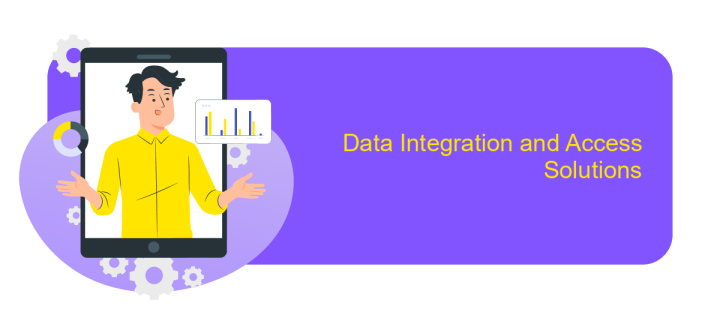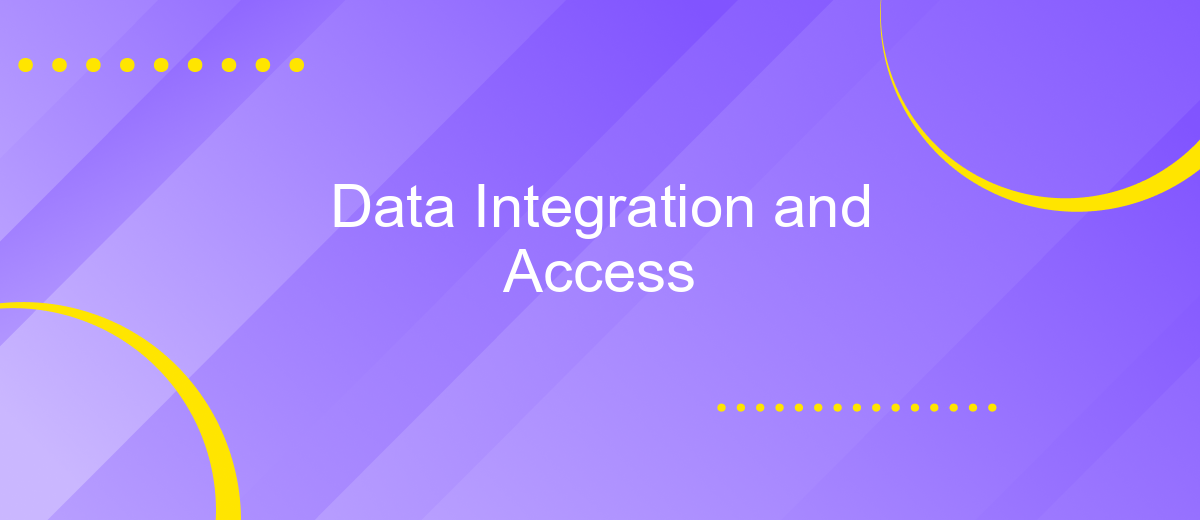Data Integration and Access
Data Integration and Access are critical components in today's data-driven world. As organizations accumulate vast amounts of information from diverse sources, the ability to seamlessly integrate and access this data becomes paramount. Effective data integration ensures that data is consolidated, accurate, and accessible, empowering businesses to make informed decisions, enhance operational efficiency, and drive innovation.
Data Integration and Access
Data integration and access are critical components in modern data management strategies. They facilitate the seamless flow of information across various systems, ensuring that data is readily available for analysis, reporting, and decision-making processes. Effective integration and access strategies help organizations maintain data consistency, improve data quality, and enhance operational efficiency.
- Data Integration: Combining data from different sources into a unified view.
- Data Access: Ensuring authorized users can retrieve and manipulate data as needed.
- ETL Processes: Extracting, transforming, and loading data into a central repository.
- APIs: Enabling communication and data exchange between different software applications.
- Data Warehousing: Storing integrated data for easy access and analysis.
Implementing robust data integration and access mechanisms allows businesses to leverage their data assets more effectively. It supports better decision-making, fosters innovation, and provides a competitive edge in the market. As data continues to grow in volume and complexity, the importance of efficient data integration and access cannot be overstated.
Introduction

Data integration and access are critical components in the modern data-driven landscape. Organizations today rely on vast amounts of data sourced from various platforms and systems. The ability to seamlessly integrate and access this data is essential for informed decision-making, operational efficiency, and competitive advantage. Data integration involves combining data from different sources to provide a unified view, while data access ensures that this integrated data is readily available for analysis and reporting.
One of the key challenges in data integration is dealing with disparate systems and formats. Tools like ApiX-Drive offer a solution by automating the integration process, enabling businesses to connect multiple applications and services without the need for extensive coding. ApiX-Drive facilitates real-time data synchronization, ensuring that data is up-to-date and accessible across various platforms. By leveraging such tools, organizations can streamline their data workflows, reduce manual intervention, and enhance the overall efficiency of their data management processes.
Challenges in Data Integration and Access

Data integration and access are critical components in modern data management, but they come with a variety of challenges. Organizations often struggle to seamlessly combine data from disparate sources, leading to inconsistencies and inefficiencies. Additionally, ensuring secure and efficient access to integrated data is a significant hurdle, especially as data volumes and complexity grow.
- Data Silos: Isolated data repositories make it difficult to achieve a unified view.
- Data Quality: Inconsistent data formats and inaccuracies can compromise integration efforts.
- Scalability: Managing and processing large volumes of data requires robust infrastructure.
- Security: Protecting sensitive information while allowing access is a complex task.
- Compliance: Adhering to various regulations across regions can be challenging.
Addressing these challenges requires a strategic approach that includes investing in advanced integration tools, implementing stringent data governance policies, and fostering a culture of collaboration across departments. By overcoming these obstacles, organizations can unlock the full potential of their data, leading to better decision-making and improved operational efficiency.
Data Integration and Access Solutions

Data integration and access solutions are critical for organizations aiming to harness the full potential of their data. These solutions enable seamless data flow between disparate systems, ensuring that data is accessible, accurate, and up-to-date. By implementing effective data integration strategies, businesses can break down data silos and foster a more collaborative and data-driven environment.
Modern data integration tools offer a variety of features that cater to different business needs. From real-time data synchronization to batch processing, these tools are designed to handle complex data landscapes. They also support various data formats and sources, making it easier for organizations to integrate data from multiple platforms.
- ETL (Extract, Transform, Load) Tools
- Data Virtualization Solutions
- API Management Platforms
- Cloud-Based Data Integration Services
Choosing the right data integration and access solution depends on several factors, including the organization's data architecture, scalability requirements, and budget. By carefully evaluating these factors, businesses can select a solution that not only meets their current needs but also scales with their future growth.


Benefits of Data Integration and Access
Data integration and access offer numerous benefits that significantly enhance business operations. By consolidating data from various sources, organizations can achieve a unified view of their information, enabling more accurate and timely decision-making. This integration eliminates data silos, ensuring that all departments have access to consistent and up-to-date information. As a result, businesses can streamline their processes, reduce redundancy, and improve overall efficiency.
Moreover, tools like ApiX-Drive facilitate seamless data integration by providing easy-to-use interfaces and automated workflows. These services allow businesses to connect various applications and data sources without the need for extensive coding or technical expertise. By leveraging such tools, companies can save time and resources while ensuring data integrity and accessibility. Ultimately, effective data integration and access empower organizations to make data-driven decisions, enhance collaboration, and drive innovation.
FAQ
What is data integration and why is it important?
What are the common challenges in data integration?
How can I automate data integration processes?
What are the benefits of automating data integration?
How do I ensure data security during integration?
Apix-Drive is a universal tool that will quickly streamline any workflow, freeing you from routine and possible financial losses. Try ApiX-Drive in action and see how useful it is for you personally. In the meantime, when you are setting up connections between systems, think about where you are investing your free time, because now you will have much more of it.

